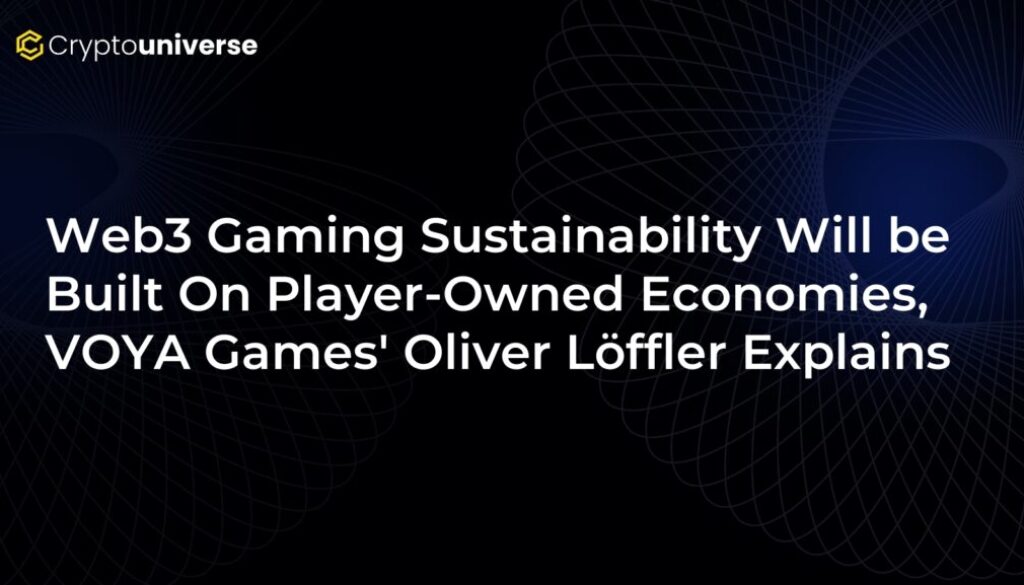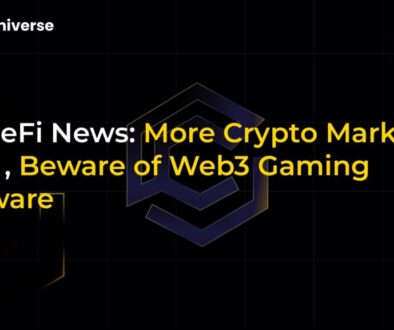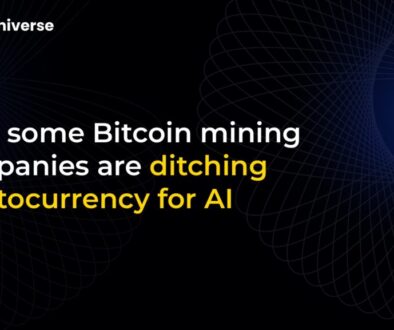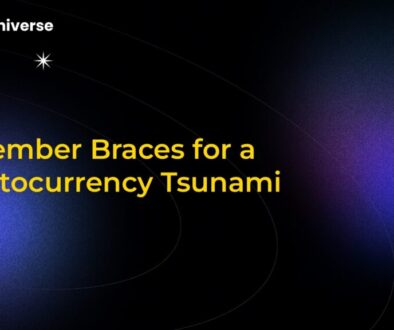Web3 Gaming Sustainability Will be Built On Player-Owned Economies, VOYA Games’ Oliver Löffler Explains

The Quest for Sustainable Fun in Web3 Gaming
The digital landscape of gaming is on the brink of a monumental shift. With over 3.2 billion gamers worldwide, the potential for blockchain integration has long been a tantalizing prospect. However, the initial wave of play-to-earn (P2E) games often prioritized speculative earnings over engaging gameplay, leading to volatile boom-and-bust cycles. Now, a new philosophy is taking hold, one that champions sustainability, community, and genuine ownership. The future, as many builders in the space believe, is in crafting resilient, player-owned economies.
To understand this evolution, we explored the vision of Oliver Löffler, CEO and co-founder of VOYA Games. With a track record that includes creating the mobile hit Idle Miner Tycoon—which garnered over 100 million downloads and was later acquired by Ubisoft—Löffler is no stranger to building successful games. Now, with VOYA Games, he’s applying those lessons to the unique challenges and opportunities of Web3.
Löffler argues that
From Developer-Controlled to Player-Owned: A Paradigm Shift
The core difference between Web2 and Web3 gaming lies in who holds the power. In traditional gaming, developers control the in-game economy. They can adjust drop rates, introduce new items, and effectively dictate the value of assets. In Web3, that control is handed over to the players.
“That shift forces you to design systems that are resilient, open-ended, and fair,” Löffler explains. “You can’t patch your way out of a broken token economy; you need to get the foundation right from day one.”
This reality has spurred a maturation of economic models within the space:
- Play-to-Earn (P2E): The initial model, where earning was the primary driver, often at the expense of fun.
- Play-and-Earn: An evolution that focused on integrating earning mechanics into enjoyable gameplay loops.
- Play-and-Own: The current frontier, where the focus is on giving players true ownership of assets and a real stake in the game’s economy and future.
This is where VOYA Games is planting its flag with its Angry Dynomites Lab IP and the launch of Craft World, a dinosaur-themed resource-farming game designed to be the gateway into a larger ecosystem.
“The idea was simple: make something fun and approachable, something you can just tap and play, but over time, it opens up into this deeper economy that’s completely player-owned.”
Oliver Löffler, CEO of VOYA Games
Building a Resilient Economy from the Ground Up
So, how do you build an economy that players own and that can last? VOYA’s approach with Craft World is multifaceted, moving beyond the simple one-or-two token systems common in other Web3 titles.
1. A Multi-Asset Foundation
From the outset, Craft World features over 25 on-chain resources. These aren’t just cosmetic skins; they are functional materials used for crafting, building, and trading within the game. “The cool part is they sit in your wallet. You can send them to a friend, trade them, or lend them out. And we actually don’t control any of that, players do,” Löffler highlights. This complex interplay of resources aims to create a more robust and realistic market driven entirely by player activity.
2. Creating “Fun” Token Sinks
A major challenge for any token-based economy is creating genuine demand. If a token’s only use is to be sold on an exchange, its value is purely speculative. VOYA is tackling this by focusing on utility. The ecosystem’s Dyno Coin is designed to “unlock fun, to craft, to trade.”
“The only way to get it is by actually playing, completing quests, or acquiring it from other players, not through insider allocations or presales,” says Löffler. “That’s the key to sustainability: create token sinks that are fun within the game.”
3. A Fair and Transparent Launch
Trust is paramount in a player-owned world. To build it, VOYA has committed to a “fair launch, community-first” model for its tokens. There are no allocations held back for insiders or early investors. This ensures that the economy’s ownership is genuinely distributed among the people who participate and contribute to it.
The Vision: An Interconnected, Multi-Game Universe
Craft World is just the beginning. It’s the onboarding ramp into a much larger vision powered by Project Voyager, a companion app that incentivizes participation and connects players to a broader meta-game. The long-term goal is to build a multi-game world where assets, currencies, and player identities are shared and interoperable.
Resources gathered in Craft World could one day be used to craft weapons in a battle game or build structures in a creator-focused experience, all within the same VOYA ecosystem. By leveraging DeFi mechanics like player-provided liquidity pools—and with plans for loan protocols and futures contracts—the economic possibilities for players expand dramatically.
“If we get that right, VOYA Games isn’t just a game studio; it becomes a platform for a new kind of open, player-owned gaming universe,” Löffler notes.
Onboarding the Next Generation of Gamers
For Web3 gaming to reach its projected market size of nearly $183 billion by 2034, it must appeal to more than just crypto natives. It has to win over traditional gamers.
Löffler believes the key is to make the technology invisible. “Most gamers don’t care about wallets or decentralization; they care about fun. If we can make Web3 feel invisible at first but rewarding over time, then we’ll have done our part in moving the whole space forward.”
The initial response suggests this approach is working. In its first 20 days, Project Voyager, which connects to Craft World, saw over 2.7 million accounts created and 2.8 million on-chain trades. This demonstrates a clear appetite for games that blend accessible fun with deep, meaningful ownership.
Looking ahead, Löffler’s goals are clear: achieve a sustainable ecosystem with over 100,000 monthly active players who are there for the gameplay, not just the hype. It’s about building a community where making money is a welcome byproduct of having fun and feeling a true sense of ownership.
As the Web3 gaming sector matures, projects like VOYA’s are providing a potential blueprint for the future—a future where the answer to


